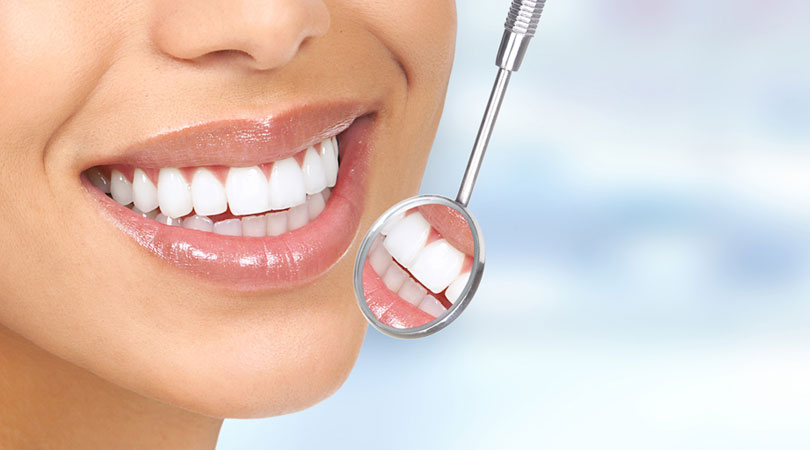Dental
Dental procedures vary widely depending on the specific treatment, ranging from routine cleanings to more complex procedures like root canals and implants.

Detailed Procedure of Dental
Here’s a step-by-step guide to the detailed procedure:
1. Dental Examination and Diagnosis
A dental procedure typically starts with a comprehensive oral exam to assess the condition of the teeth, gums, and overall oral health.
a) Medical and Dental History Review:
- The dentist begins by reviewing the patient’s medical and dental history to understand any past treatments, allergies, medications, and underlying health conditions.
b) Oral Examination:
- A physical examination of the teeth, gums, tongue, and other areas of the mouth is conducted to check for decay, gum disease, cavities, misalignment, or other oral health issues.
c) X-rays:
- Dental X-rays may be taken to get a more detailed view of the teeth, roots, and bone structure. This helps the dentist detect cavities, infections, and other problems not visible to the naked eye.
d) Diagnosis and Treatment Plan:
- Based on the exam and X-rays, the dentist diagnoses the patient’s condition and suggests an appropriate treatment plan. The treatment could be preventive, restorative, or cosmetic.
2. Dental Cleaning (Prophylaxis)
Routine dental cleanings are one of the most common and important preventive dental procedures. They help remove plaque, tartar, and stains from the teeth.
a) Plaque and Tartar Removal (Scaling):
- The hygienist or dentist uses an ultrasonic scaler or manual hand tools to remove plaque and tartar from the tooth surfaces, especially around the gum line and between the teeth.
- Scaling can be done using manual tools, or an electric scaler may be used to remove hard deposits (tartar).
b) Polishing:
- After scaling, the teeth are polished using a rotating brush and a special abrasive paste. This helps smooth the surface of the teeth, making it harder for plaque to accumulate.
- The paste also helps remove surface stains and minor discoloration.
c) Flossing and Rinsing:
- The dental professional flosses between the teeth to remove any remaining debris.
- The mouth is then rinsed with water or a fluoride solution.
d) Fluoride Treatment (Optional):
- For added protection, a fluoride treatment may be applied. Fluoride helps strengthen the enamel and prevent cavities.
- This may involve a fluoride gel, foam, or varnish, which is applied to the teeth for 1-4 minutes.
3. Dental Fillings
Fillings are used to restore teeth that have been damaged by decay. This procedure involves removing the decayed portion of the tooth and filling it with a suitable material.
a) Local Anesthesia:
- The dentist numbs the area around the tooth using a local anesthetic (such as lidocaine) to prevent any pain during the procedure.
b) Decay Removal:
- The decayed part of the tooth is removed using a drill, laser, or air abrasion tool. The dentist carefully removes the damaged tissue, leaving the healthy tooth structure intact.
c) Tooth Preparation:
- The dentist shapes the cavity to ensure the filling fits securely.
- If the decay is near the tooth’s nerve, a protective liner (usually made of composite resin or glass ionomer) may be applied to protect the nerve.
d) Filling the Cavity:
- The cavity is then filled with a suitable filling material. Common materials include:
- Composite resin (tooth-colored filling)
- Amalgam (silver filling)
- Gold inlays/onlays
- Ceramic or porcelain fillings
e) Shaping and Polishing:
- Once the filling is placed, the dentist shapes and polishes it to match the natural contours of the tooth.
- The bite is checked to ensure proper alignment, and any necessary adjustments are made.
4. Tooth Extraction
Tooth extraction involves the removal of a tooth that is damaged, infected, or impacted (such as wisdom teeth). It can be a simple or surgical extraction, depending on the complexity of the case.
a) Local Anesthesia:
- The dentist numbs the area around the tooth with a local anesthetic to prevent pain during the procedure.
b) Simple Extraction (For visible teeth):
- If the tooth is above the gum line, the dentist uses an elevator (a dental tool) to loosen the tooth, followed by forceps to extract it.
- The tooth is removed in one piece, and the socket is cleaned.
c) Surgical Extraction (For impacted teeth):
- If the tooth is impacted (trapped under the gum or bone), the dentist or oral surgeon makes an incision in the gum tissue.
- In some cases, the tooth may be sectioned (cut into pieces) for easier removal. A drill may be used to remove bone around the tooth.
- Once the tooth is removed, the site is cleaned, and stitches may be placed to close the incision.
d) Post-Extraction Care:
- The dentist provides instructions for aftercare, including managing pain, swelling, and bleeding. Patients are often advised to avoid strenuous activity, smoking, and drinking through a straw for a few days.
- Gauze is placed on the extraction site to control bleeding, and ice packs are applied to reduce swelling.
5. Root Canal Treatment (Endodontic Therapy)
A root canal is performed to treat infection or damage in the tooth’s pulp (the innermost part of the tooth). This procedure preserves the natural tooth and prevents the need for extraction.
a) Local Anesthesia:
- The area around the affected tooth is numbed with a local anesthetic.
b) Accessing the Tooth:
- The dentist drills an access hole through the crown of the tooth to reach the infected or damaged pulp.
c) Pulp Removal:
- The infected or dead pulp tissue is carefully removed using small instruments called files. This includes cleaning out the root canals (narrow pathways inside the tooth).
d) Cleaning and Disinfecting:
- The canals are disinfected using an antiseptic solution to remove bacteria and debris.
e) Filling the Root Canals:
- The cleaned canals are then filled with a rubber-like material called gutta-percha to seal them and prevent reinfection.
f) Sealing the Tooth:
- After the root canal is filled, the dentist may place a temporary filling to close the access hole.
- In some cases, a crown is needed to protect the tooth if a large amount of structure was removed.
6. Dental Crowns and Bridges
A crown (cap) is used to restore a damaged tooth, while a bridge is used to replace one or more missing teeth.
a) Tooth Preparation:
- The tooth is shaped and reduced using a dental drill to create space for the crown or bridge. A small amount of enamel is removed.
b) Impression Taking:
- A digital or physical impression of the prepared tooth is taken to ensure the crown or bridge fits perfectly.
- A temporary crown may be placed while the permanent crown is made.
c) Crown/Bridge Placement:
- Once the permanent crown or bridge is ready, the dentist checks its fit, shape, and color.
- The crown or bridge is then cemented onto the prepared tooth using dental adhesive, ensuring a strong bond.
7. Dental Implants
Dental implants are used to replace missing teeth by inserting a titanium post into the jawbone, which acts as an artificial tooth root.
a) Initial Consultation:
- The dentist examines the patient’s oral health and bone density to determine if they are a good candidate for implants.
b) Surgical Implant Placement:
- Under local anesthesia, the dentist makes an incision in the gum and drills a small hole in the jawbone.
- A titanium implant is inserted into the bone, and the gum is stitched closed. This implant will serve as the root for the new tooth.
c) Osseointegration:
- The implant is left to integrate with the bone over several months in a process called osseointegration.
- After the implant has fused with the bone, a small connector called an abutment is attached to the implant.
d) Crown Placement:
- A custom-made crown is placed on top of the abutment to complete the restoration.
8. Orthodontic Treatment (Braces and Aligners)
Orthodontic treatment is used to correct misaligned teeth, bites, and jaw issues.
a) Initial Consultation and X-rays:
- The dentist or orthodontist takes X-rays and impressions of the teeth to plan the treatment.
b) Bracket and Wire Placement (for braces):
- Brackets are bonded to each tooth, and an archwire is threaded through the brackets to apply pressure and gradually move the teeth into alignment.
- Periodic adjustments are made to tighten the wires and continue the process.
c) Clear Aligners:
- Clear aligners like Invisalign are an alternative to traditional braces. They are removable, clear trays custom-made to fit the patient’s teeth.
- The aligners are changed every 1-2 weeks to gradually shift the teeth into the correct position.
Post-Procedure Care
Regardless of the specific dental procedure, aftercare is essential to ensure proper healing and long-term success.
a) Pain Management:
- Over-the-counter pain relievers like ibuprofen may be recommended for discomfort after procedures such as extractions, fillings, or root canals.
b) Oral Hygiene:
- Patients are instructed to maintain proper oral hygiene by brushing twice a day, flossing, and using mouthwash to prevent infection and promote healing.
c) Follow-up Visits:
- Follow-up appointments may be necessary to monitor the healing process, check the fit of restorations, or adjust orthodontic appliances.
d) Dietary Restrictions:
- After certain procedures like extractions or implants, patients may be advised to eat soft foods and avoid hot, spicy, or hard foods until the area heals.
Conclusion
Dental procedures are essential for maintaining oral health, restoring functionality, and enhancing the appearance of the teeth. With advances in technology and techniques, most treatments are minimally invasive and provide long-term benefits with proper care.

